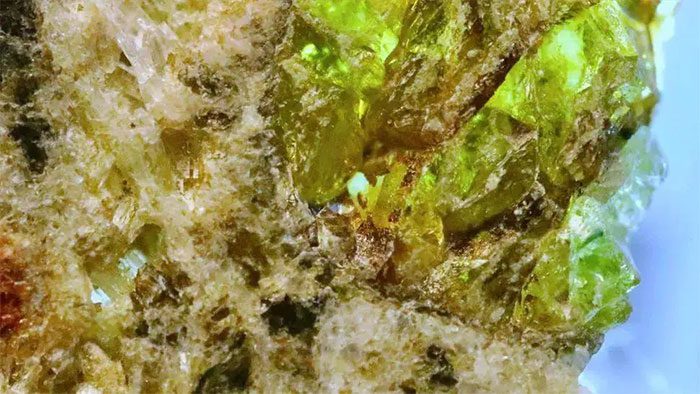Beautiful and Unique Treasures from the Erg Chech Sand Sea in the Sahara Desert Could Rewrite the History of the Early Solar System.
According to Space.com, in May 2020, unusual rocks containing strange green crystals were discovered in the Erg Chech sand sea in Algeria, perplexing the scientific community. These have now been identified as unparalleled treasures from the universe.
In the quest to understand our origins, humanity has always sought materials belonging to the early formation of the Solar System.

Unique cosmic treasure that fell in the Sahara Desert in 2020 – (Photo: NATURE COMMUNICATIONS)
Such efforts include billion-dollar missions like NASA’s OSIRIS-Rex, which aimed to bring back a few hundred grams of material from an asteroid “older than Earth.”
In a fortunate twist, the rocks that fell in the Sahara have been identified as belonging to a larger parent body called the Erg Chech 002 meteorite, which may be equally valuable.
A study recently published in the scientific journal Nature Communications analyzed the lead and uranium isotopes of Erg Chech 002, revealing that it is nearly 4.566 billion years old.
According to results presented by the research team led by Dr. Evgenni Krestianinov from the Earth Sciences School at the Australian National University (ANU), the crystal-laden rocks are indeed treasures for planetary science.
Because they belong to the primordial “protoplanets” of the Solar System.
Protoplanets are objects with characteristics similar to primitive planets, smaller than today’s planets, which were the first to form in the dust and gas disk surrounding the young Sun.
Theories supported by substantial evidence suggest that these protoplanets collided with one another and broke apart. However, they did not “die” entirely; rather, the fragments reassembled to give rise to planets, including Earth.
Previous studies indicate that at least four rocky planets in the “inner” Solar System – Mercury, Venus, Earth, and Mars – formed in such a manner.
Some materials that broke off from the remaining protoplanets did not merge into the bodies of the current planets, resulting in a group of meteorites known as “unclassified achondrites”, meaning that their specific precursor type and relationship to other primordial objects remain undetermined.
The unique structure of this primordial material not only helps us better understand how Earth was formed but also serves as a crucial piece in reconstructing the original history of the Solar System.
Recent discoveries suggest that this ancient history may be far more complex and dynamic than familiar theories suggest.


















































